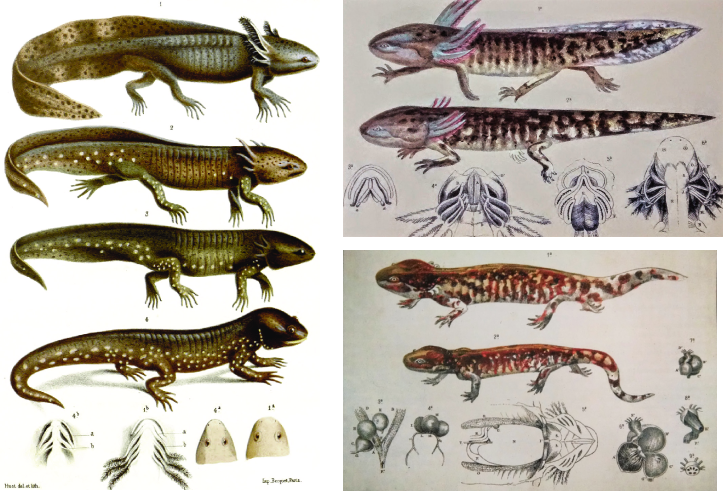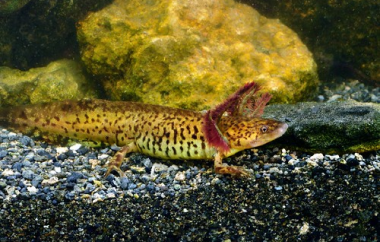
The genus Ambystoma, commonly called “axolotls”, comprises a group of 33 species, which are distributed in North America from southwest Alaska and southern Canada to the Mexican Highlands.
In the particular case of Mexico there are 17 species distributed in the northeast and center of the country; of which 16 are endemic and one, Ambystoma mavortium, shares distribution with the United States and Canada.
Of the 17 Mexican species, 15 are in some category of risk within the NOM-059-Semarnat-2010. One of them, Ambystoma mexicanum , is categorized as Endangered (P), three as Threatened (A) and 11 as Subject to Special Protection (Pr). They live in lakes and streams, where the characteristics of these bodies of water have allowed them to adapt exclusively in certain places, which makes them more vulnerable and therefore, they have suffered a notorious population decline, mainly due to factors related to environmental changes. , contamination and introduction of invasive alien species.
Axolotls are part of our culture, traditions and culinary art. In addition to being an important part of our biological wealth, since it is the Mexican animal, best known throughout the world. It is of great medical importance; In addition, it is used as an experimental model for various studies such as: developmental biology, regeneration, metamorphosis, transplants, anatomy, etc.
They have a body similar to that of a lizard, with smooth, glandular and moist skin. They have legs with four toes on the forelimbs and five on the hindquarters, lacking nails. Its coloration varies between brown, black, green, yellow and sometimes pink, and there are also albino axolotls. Its body is robust, with rib grooves on the sides and a broad head; the tail is flattened laterally, they lack eyelids and have rudimentary lungs and gills. They have a large mouth with great suction capacity, tiny teeth as well as a retractable tongue like that of frogs. In some species, the adults are paedomorphic or neotenic, that is, they reach sexual maturity presenting characteristics of a larva, for example, the retention of gills, the presence of a quadratic membrane and the permanence of their aquatic form.

The taxonomic classification of the genus Ambystoma is as follows:
Class: Amphibian
Order: Caudata
Sub-Order: Salamandroidea
Family: Ambystomatidae
Genus: Ambystoma
- Ambystoma altamirani
- Ambystoma amblycephalum
- Ambystoma andersoni
- Ambystoma annulatum
- Ambystoma barbouri
- Ambystoma bishopi
- Ambystoma bombypellum
- Ambystoma californiense
- Ambystoma cingulatum
- Ambystoma dumerilii
- Ambystoma flavipiperatum
- Ambystoma gracile
- Ambystoma granulosum
- Ambystoma jeffersonianum
- Ambystoma laterale
- Ambystoma leorae
- Ambystoma lermaense
- Ambystoma mabeei
- Ambystoma macrodactylum
- Ambystoma maculatum
- Ambystoma mavortium
- Ambystoma mexicanum
- Ambystoma opacum
- Ambystoma ordinarium
- Ambystoma rivulare
- Ambystoma rosaceum
- Ambystoma silvense
- Ambystoma subsalsum
- Ambystoma talpoideum
- Ambystoma taylori
- Ambystoma texanum
- Ambystoma tigrinum
- Ambystoma velasci


